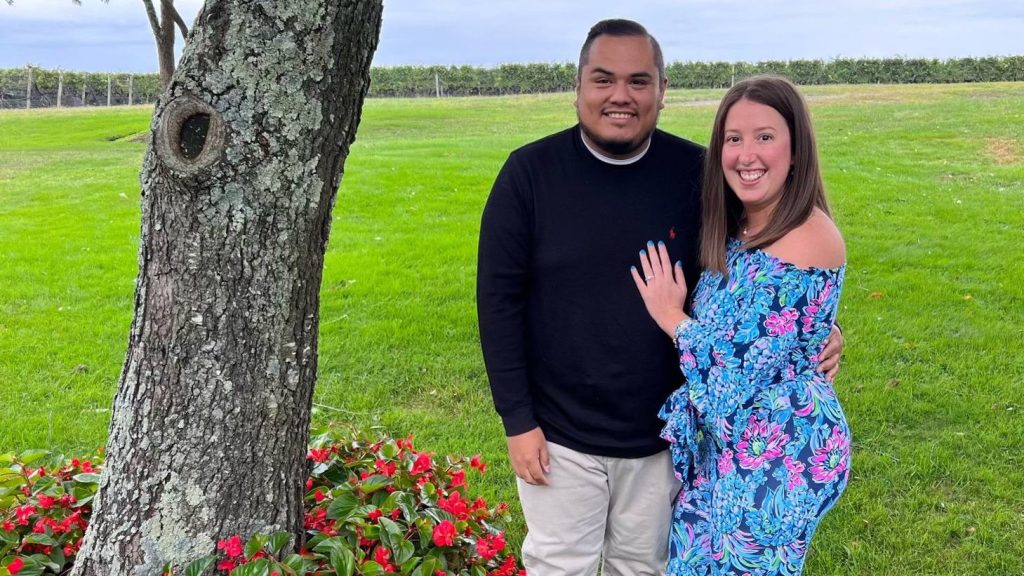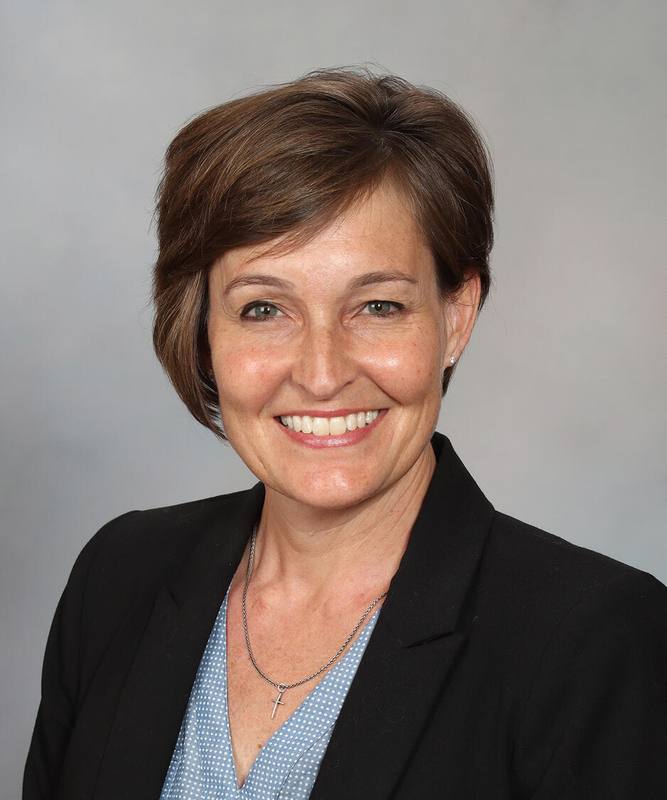
The year was 2019. Alexa Lofaro was in her happy place, inside Nassau Veteran's Memorial Collesium in Uniondale, New York, watching the New York Islanders play hockey. As she made her way to her seat, another fan’s words caught her off-guard. “As I walked by him, he said, ‘Get home safely,’” Alexa says. “He thought I was drunk. I wasn’t drunk.”
Instead, Alexa’s slow, cautious walk down the arena stairs was to compensate for the progressive loss of balance and changes in gait she’d started experiencing months before. “Things just got worse from there,” Alexa says. “I eventually couldn’t walk, and I wasn’t able to go to games anymore. That alone was hard for me because I’m a big sports fan.”
As her symptoms progressed, Alexa also found herself unable to continue her career as an attorney in Long Island, New York. “I couldn’t go to court anymore because I was too unsteady to take public transportation,” she said in this story by Mayo Clinic News Network. “I was alternating between somewhat dragging my left leg and swinging it around from the hip. My speech started changing, as well. It was garbled, and I sounded as though I had marbles in my mouth.”

After months of local specialists being unable to accurately diagnose the cause of her symptoms, Alexa boarded an airplane and flew to Minnesota, where a team of specialists at Mayo Clinic worked collaboratively to solve her medical mystery in just a few short days. “The first doctor I met with was Dr. W. Oliver Tobin, who walked in and within five minutes of me sitting down basically said, ‘You’re misdiagnosed. This is what we think it is, and this is what we’re going to do to test it and confirm it,’” Alexa says. “He and others at Mayo Clinic then very quickly assembled whichever parties needed to be assembled to get me the right diagnosis.”
A multidisciplinary, pre-appointment collaborative approach to finding answers
As it would turn out, one of the key members of Alexa’s care team at Mayo Clinic wasn’t a single person, but a group of specialists who make up Mayo Clinic’s multidisciplinary Histiocytosis Working Group. Formed in 2017 by a team of specialists across the institution with an interest in histiocytic diseases and coordinated by hematologist Ronald Go, M.D., Dr. Tobin told Mayo Clinic News Network that the group meets “once a month and are in regular communication when we have a patient like Alexa.”

And when Drs. Tobin, Go, and the rest of the group spent time discussing Alexa’s individual case and symptoms before her first visit to Mayo Clinic, they began to suspect she was suffering from a rare histiocytic disorder called Erdheim-Chester disease rather than the chronic lymphocytic inflammation with pontine perivascular enhancement responsive to steroids, or CLIPPERS, she’d been diagnosed with back home in New York. “By the time Alexa came to Mayo, Dr. Tobin had already consulted with our clinical group that focuses on these disorders to get our input,” says Karen Rech, M.D., a Mayo Clinic histiocytosis pathologist who’s also a member of Mayo’s Histiocytosis Working Group. “Our radiologist, Dr. Jason Young, felt the imaging findings in her brain were consistent with Erdheim-Chester rather than CLIPPERS.”
Confirming the diagnosis

To be sure, the group would need confirmation, and their first step was to order a non-traditional PET scan. “Dr. Tobin ordered a PET scan from the head all the way to the toes,” Dr. Rech says. “Typically, a PET scan only goes to mid-thigh. But in Erdheim-Chester disease, lesions often occur in the bone around the knee, so they’re missed by a typical PET scan.”
When the results came in, Dr. Tobin immediately saw the characteristic lesions involving the bones around Alexa’s knees that led him and others to believe Alexa was in fact suffering from Erdheim-Chester disease. But they needed yet more confirmation to be sure. “We still needed a biopsy and then genetic testing to further confirm the diagnosis,” Dr. Rech says.
In Alexa’s case, however, getting a viable biopsy would prove challenging. “We talked a great deal about the best way to get a biopsy because if you have a bone biopsy that has a lot of calcified tissue in it, it needs to be de-calcified before we can section it and look at the sections under a microscope,” Dr. Rech says. “However, if you do that de-calcification process, it ruins the tissue for genetic testing, so we worked with the radiologist who was doing her biopsy to get a large volume sample and then to process it without de-calcification.”
Looking for a mutation
Successful biopsy in hand, the next step was to put the sample through genetic testing to see if there was a genetic mutation that could be responsible for Alexa’s symptoms. “About 10 years ago, recurrent mutations were identified in Erdheim-Chester disease that involve the MAP kinase pathway, and that’s the driver mutation of this disorder,” Dr. Rech says. “So, identifying that mutation is very important to confirming a diagnosis, because the findings under the microscope are not very specific, and in the end, we really need to confirm the genetic mutation is there.”
To make that confirmation, Dr. Rech and others relied on the use of a highly sensitive method of genetic testing called next-generation sequencing that evaluates hundreds of thousands of DNA strands at once to detect mutations at very low frequencies. “We have to have a very sensitive test in order to find the mutation,” Dr. Rech says. And in the end, next-generation sequencing proved sensitive enough to find what Dr. Rech and the rest of Alexa’s care team were looking for: a genetic alteration in her BRAF gene believed to be the source of her symptoms and declining health.
Targeted therapy, remarkable improvement
With the problem gene identified, Alexa’s care team could now turn its attention to developing an effective and meaningful treatment plan. “She hadn’t been responding to steroids, so we got a targeted therapy directed against that mutated protein and she’s shown remarkable improvement,” Dr. Rech says.
If you were to ask Alexa, “remarkable” might be a bit of an understatement, because in the three-plus years it’s been since she first came to Mayo Clinic, she says she’s never felt better. “I feel so much better than I did when I first came to Mayo,” she says. “When I first came to Rochester, I was a hot mess. I couldn’t lift my left arm. I couldn’t do my hair. Now, physically, I feel so much better. I went from not working to now being back to work full-time after not being able to work for 712 days. I’ve been off medicine for two years now, and I feel the strongest that I’ve felt in years and that’s been absolutely fabulous. I have no limitations on what I can do. I can drive again. I can walk freely again. I can work again. I can be independent again.”
She can also start thinking about her future again. To that end, aside from her much-improved health, Alexa also has one more piece of exciting news to share. “I’m getting married later this year,” she says.
‘A very pleasant and well-run patient experience’
In Alexa’s mind, none of this would have happened had she not come to Mayo Clinic. “From start to finish, Mayo Clinic offers a very pleasant and well-run patient experience,” she says. “You’re getting people who are at the top of their fields and at the height of medicine. Just the simple fact that I walked in there for the first time with a rare disease and within minutes they were like, ‘We think this is what it is,’ is amazing because leading up to that point I’d seen several doctors who’d never even heard about Erdheim-Chester disease. The fact that you can come to a place like Mayo Clinic and get that kind of assurance and that kind of meaningful treatment is amazing.”
Equally amazing, Alexa says, were the care team members who worked so diligently and so collaboratively to provide her with that assurance and treatment. “Everyone I met and interacted with was so friendly and caring and really took the time to make sure I knew and understood what was happening – and why – throughout every step of my treatment,” Alexa says. “I’ve been to several other medical centers – you don’t always get that level of care. At Mayo Clinic, they figured out what was wrong and put me on a path to feeling normal again.”
For Dr. Rech, having played a role in Alexa’s transformation is why she became a physician to begin with, and why she continues to be involved in Mayo Clinic’s Histiocytosis Working Group. “We see patients like Alexa who go years without the correct diagnosis, so they have chronic fatigue, they have chronic bone pain, they have endocrine involvement, they don’t have normal hormone levels and they constantly feel sick,” she says. “It’s extremely gratifying to be able to help them. I went into medicine because I wanted to help patients and as a pathologist sitting behind a microscope, you don’t have a lot of personal connections to patients. So, to hear that something that you did and something that you and others worked hard on directly contributed to a patient’s care and had such a positive impact on their life feels really good.”
This article originally posted to the Mayo Clinic Laboratories blog.
You can read Alexa’s initial story on the Mayo Clinic News Network here.







